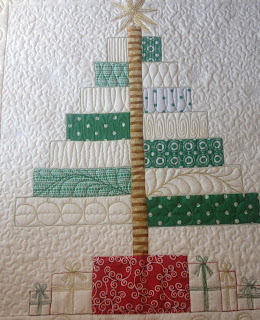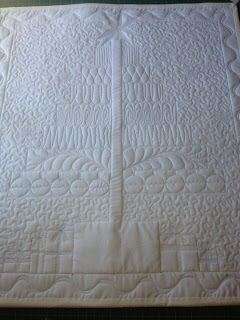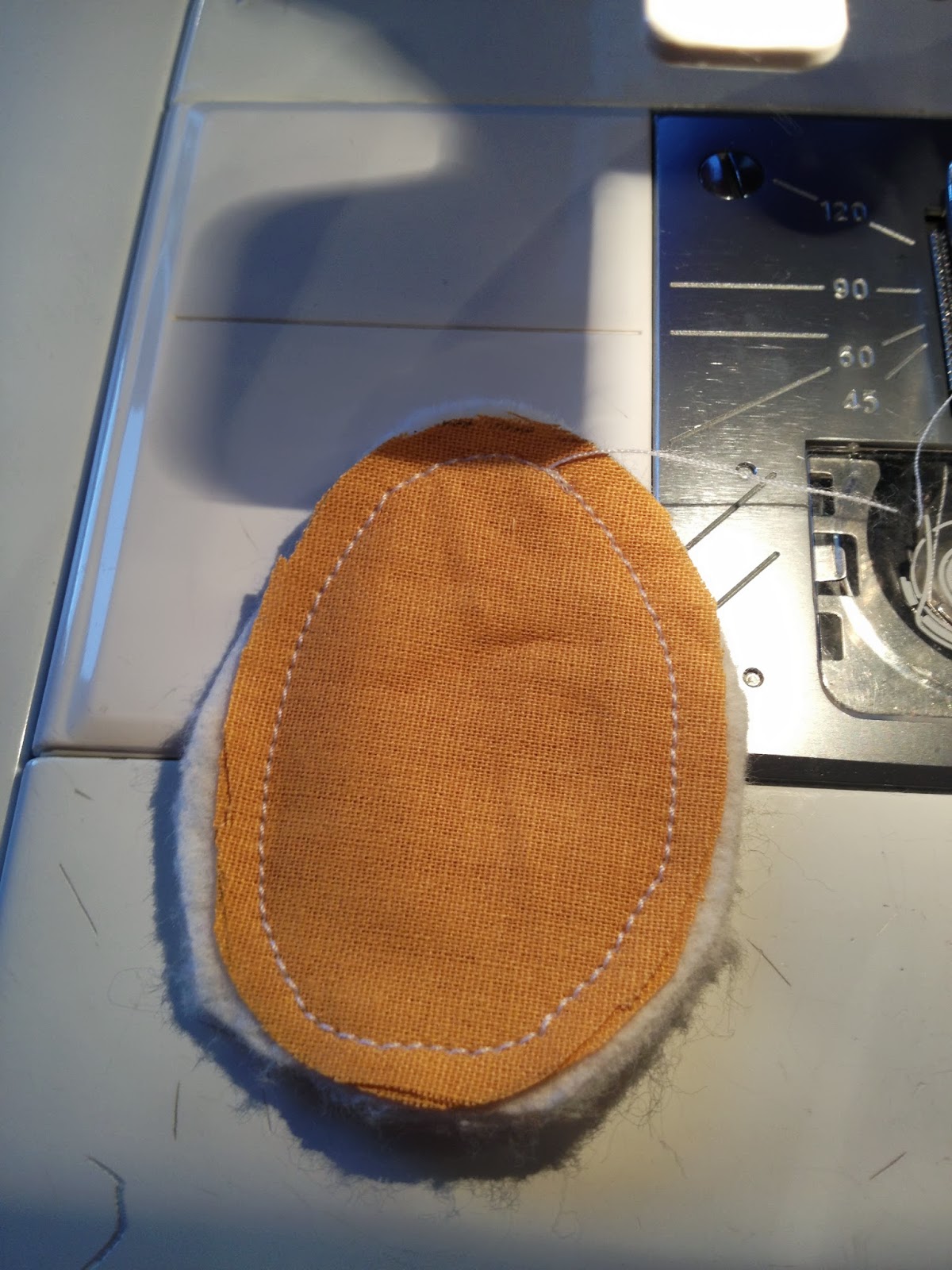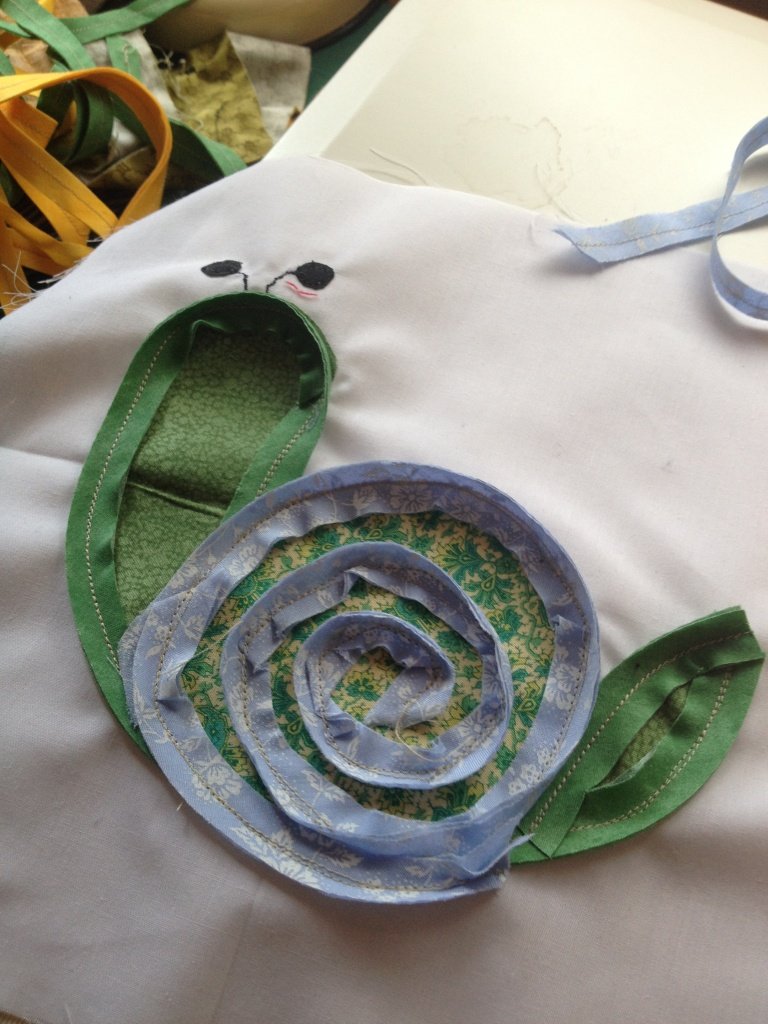I recently made this wall hanging for a Quilt Challenge and I incorporated some 'bobbin work' to use metallic threads. I just love the way it turned out. This is an original design by moi and I wanted it to be distinctly modern in style. I think I achieved it - what do you think?
I did a class last year with Helen Godden at the AMQF (Australian Machine Quilting Festival). She warned us that metallic threads are very difficult to work with and break very easily. Also that it is very difficult to thread them through the sewing machine needle. So the way to use them in a quilt is to use them in the bobbin. Hence the term 'bobbin work'. Because you don't have to thread a needle, you can use many different types of threads in a bobbin. I have successfully used pearl cotton, metallic thread and even metallic cording.
In order to do bobbin work you have to be able to adjust the tension of your bobbin case. If you are worried about stuffing your bobbin case up, then I suggest getting an additional bobbin case to play with. So the thicker the thread, the looser the bobbin tension. Remember Lefty Lucy and Righty Tighty! And when adjusting the bobbin tension, you want to do this in small increments (like turning 5 minutes on a clock face!)
You will have to wind the thread onto the bobbin by hand, which is ok to do, quite therapeutic! I have a bobbin winder, but cannot adjust the speed, so had to do this by hand.
You will be sewing on the WRONG side of your piece - so draw your design or mark out the edges of the piece you are working on. In the wall hanging above, I outline quilted in the ditch all the tree branches so I had a marking on the back. I then used this outline as my 'template' when I was doing the bobbin work.
For your top thread, you should choose a colour that is close to the bobbin thread. In the example below I used a brown shade of thread in my top thread as the bobbin was wound with copper coloured cording.
If you can't use the bobbin case to adjust your tension, then you can use another technique called 'couching'. There are useful techniques here and here. This technique allows you to use much thicker threads and even yarns. This just adds a fun dimension to your quilts and opens you up to the wonderful world of quilt embellishments!
Have fun!
Yours in Quilting!
I did a class last year with Helen Godden at the AMQF (Australian Machine Quilting Festival). She warned us that metallic threads are very difficult to work with and break very easily. Also that it is very difficult to thread them through the sewing machine needle. So the way to use them in a quilt is to use them in the bobbin. Hence the term 'bobbin work'. Because you don't have to thread a needle, you can use many different types of threads in a bobbin. I have successfully used pearl cotton, metallic thread and even metallic cording.
In order to do bobbin work you have to be able to adjust the tension of your bobbin case. If you are worried about stuffing your bobbin case up, then I suggest getting an additional bobbin case to play with. So the thicker the thread, the looser the bobbin tension. Remember Lefty Lucy and Righty Tighty! And when adjusting the bobbin tension, you want to do this in small increments (like turning 5 minutes on a clock face!)
You will have to wind the thread onto the bobbin by hand, which is ok to do, quite therapeutic! I have a bobbin winder, but cannot adjust the speed, so had to do this by hand.
You will be sewing on the WRONG side of your piece - so draw your design or mark out the edges of the piece you are working on. In the wall hanging above, I outline quilted in the ditch all the tree branches so I had a marking on the back. I then used this outline as my 'template' when I was doing the bobbin work.
For your top thread, you should choose a colour that is close to the bobbin thread. In the example below I used a brown shade of thread in my top thread as the bobbin was wound with copper coloured cording.
If you can't use the bobbin case to adjust your tension, then you can use another technique called 'couching'. There are useful techniques here and here. This technique allows you to use much thicker threads and even yarns. This just adds a fun dimension to your quilts and opens you up to the wonderful world of quilt embellishments!
Have fun!
Yours in Quilting!





















































